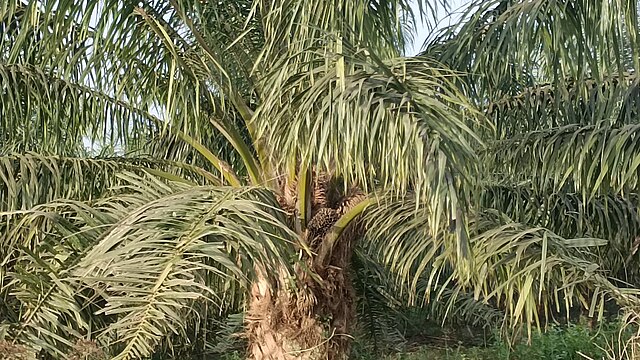The oil palm industry in Indonesia is turning to organic fertilizer to end the menace of Phythoptora disease, particularly on aging trees.
According to agricultural practitioner from West java’s Depak City, Irwan Margono, on May 26, 2024, herbicide residue causes leaf withering.
He added that the most vulnerable plantations are those with more than 15 years in existence as older trees tend to have weak defenses. Indeed, oil palms (Elaeis guineensis) have an economic lifeline of up to 30 years, which starts failing at 15 years.
Organic Fertlizer Kills Microbes
Irwan mentioned the worst microbes including Azotobacter sp. and Azospirilium sp., which however succumb to mineral-rich organic fertilizer.
Such organic fertilizers contain the mineral trio of nitrogen, potassium and phosphorous, which work with amino acids to kill soil fungi.
Eradicating Phythoptora in oil palms requires around 125 milliliters (ml) of organic fertilizer per 10 liters (l) of water. Each tree requires 0.5 l every 10 days to withstand infestation.
For leaves, the agricultural practitioner recommended leaf sprays containing 2 ml of organic fertilizer in every 1 l of water.
Indonesia’s Palm Oil Production Fact Sheet
With such practical advice, Indonesia is keen to make its palm oil industry sustainable as it represents 4.5% of the GDP.
The country leads global palm oil production at 30 million tonnes (36 million kilo liters) yearly, per the UN Development Fund (UNDP).
In 2022, Indonesia led production value at $28.7 billion to Malaysia’s $11.1 billion. The two neighbors represented more than three-quarters of global trade for the commodity.
Meanwhile, the prices of palm oil were up May 24 by 11.25%, year-on-year. Traders on the regional Malaysia’s futures platform received 3,920 Malaysian ringgit ($831.82) per tonne.
Indonesia Palm Oil Statistics
Which are the leading oil palm production areas in Indonesia? Borneo and Sumatra islands lead in production. Distinct areas include West Java, North Sumatra, Riau, West Kalimantan and Pelalawan, among others. How much palm oil do Indonesia and Malaysia produce as a portion of the world’s production? Indonesia and Malaysia together accounted for 83% of global palm oil output in 2022.
Which related product is Indonesia a key producer? Biodiesel. Indonesia produces the most biodiesel in the world, 35% of whose component is crude palm oil. How much palm oil from Indonesia has a sustainable certification? By 2021, 1/4 of Indonesia’s palm oil was certified as sustainable. This means it came from areas other than natural forests.
